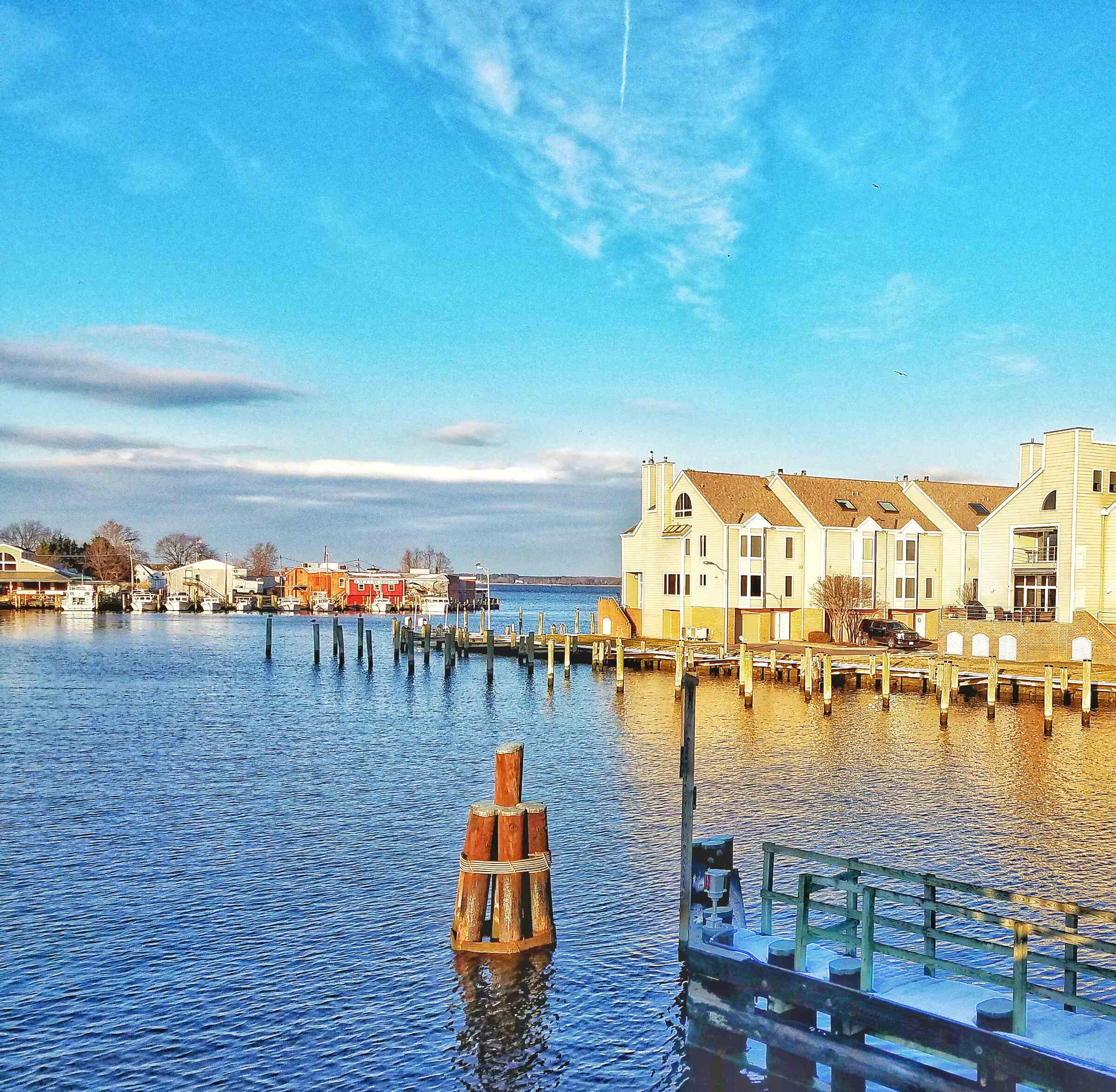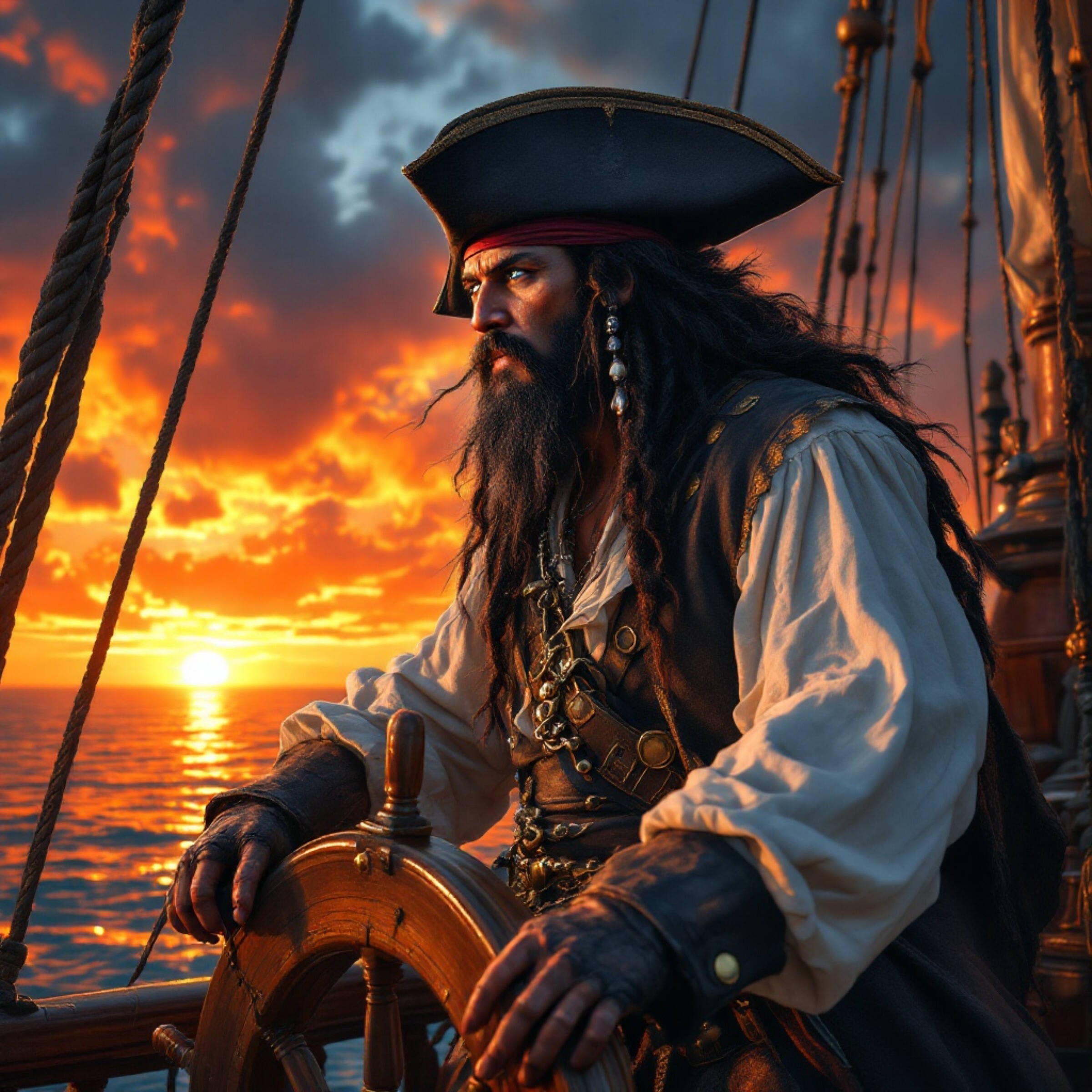Blackbeard the Pirate of the Chesapeake Bay, East Coast, and West Indies
Discover the Legend of Blackbeard the Pirate Ahoy, history enthusiasts! Get ready to embark on an exhilarating journey as we delve into the captivating story of Blackbeard, one of the most infamous pirates to sail the seas. This article takes you through his thrilling exploits across the Chesapeake Bay, East Coast, and the enchanting West Indies. Known for his fierce demeanor and theatrical tactics—like lighting slow-burning fuses in his beard during battle—Blackbeard, whose real name was Edward Teach, created a legacy that continues to fascinate adventurers and historians alike. Join us as we uncover the audacious raids, daring conquests, and the ultimate downfall of this legendary figure, and explore the enduring impact he had on the world of piracy. Set sail with us into the storied past of Blackbeard the Pirate! Who knows, could you find pirate treasure at Sandaway Beach?
Unveiling the Legacy of Blackbeard the Pirate: Exploring the Infamous History along the Chesapeake Bay, East Coast, and the West Indies
Unlock the hidden secrets of one of history's most notorious figures as we delve into the captivating legacy of Blackbeard the Pirate. From the treacherous waters of the Chesapeake Bay to the vast stretches of the East Coast and the enigmatic islands of the West Indies, this article takes you on an exhilarating journey through time.
Known for his fearsome appearance, shrouded in a tangle of black braids and a beard adorned with slow-burning fuses, Blackbeard terrorized the seas in the early 18th century. His sinister reputation continues to fascinate scholars, historians, and adventure seekers alike.
In this exploration of Blackbeard's infamous history, we'll unravel the mysteries surrounding his life and infamous exploits. Discover the thrilling tales of his audacious pirate raids, his daring conquests, and the ruthless battles that ultimately led to his demise. From the Chesapeake Bay, where he prowled the waters, to the East Coast communities he plundered, and the West Indies, his stomping ground, we'll paint a vivid portrait of this legendary pirate and the impact he had on the region.
Prepare to immerse yourself in a world of adventure, danger, and unparalleled excitement as we unveil the captivating legacy of Blackbeard the Pirate.
The Infamous History of Blackbeard
Blackbeard, whose real name was Edward Teach, was born around 1680 in Bristol, England. His early life remains largely obscured by the mists of time, but his transformation from a privateer to one of the most infamous pirates in history began during the early 18th century. He initially served under Captain Benjamin Hornigold, another notorious figure in the world of piracy, who taught him the ropes of maritime plunder. Following Hornigold's retirement from piracy, Teach seized the opportunity to establish himself as a formidable captain in his own right, commandeering a captured ship and renaming it the Queen Anne's Revenge.
Teach's notoriety was largely built on his theatrical approach to piracy. He cultivated a fearsome reputation through his appearance and tactics. With his thick black beard, which he often braided and tied with ribbons, he would light slow-burning fuses in his beard and hair during battles, creating a terrifying visage that struck fear into the hearts of sailors and merchants alike. His cunning strategies and ruthless methods allowed him to capture numerous vessels, amassing a significant fortune in gold, silver, and other valuables. The legend of Blackbeard grew, cementing his status as a symbol of piracy's golden age.
The peak of Blackbeard's career coincided with the height of piracy in the Caribbean and along the American East Coast. His audacious raids disrupted trade routes and struck fear into coastal communities. However, it was not just his exploits that made him legendary; it was also the tales that spread about him, embellished by storytellers and fellow pirates. His confrontations with naval forces, particularly the infamous battle that led to his demise, contributed to the mythos surrounding him. Blackbeard’s life was a blend of historical reality and sensational folklore, making him an enduring figure in pirate lore.
Blackbeard's Activities along the Chesapeake Bay
The Chesapeake Bay served as one of Blackbeard's primary hunting grounds, offering a strategic location for ambushing ships laden with goods. The bay's complex system of waterways provided ample opportunities for piracy, allowing him to navigate stealthily while also retreating into the labyrinthine channels to evade capture. Blackbeard's activities in this region were marked by a series of daring raids, targeting merchant vessels that passed through the area, as well as smaller fishing boats that were often unprepared for confrontation.
One of the most notable incidents occurred in 1718 when he attacked the merchant ship "Jane," capturing it without resistance. This raid showcased his audacity and tactical skill, as he utilized the bay's shallow waters to his advantage. Local communities were alarmed by his presence, leading to increased tension and fear among merchants and sailors alike. Towns along the bay, such as Annapolis and Norfolk, were particularly affected by his raids, forcing them to bolster their defenses and seek assistance from colonial authorities.
Despite his fearsome reputation, Blackbeard was not solely a ruthless marauder. He also established a network of informants and allies among local residents, which allowed him to gather intelligence on potential targets. His charm and charisma enabled him to navigate the social dynamics of the region, often securing safe passage and information through alliances with locals. This duality of his character—both a fearsome pirate and a shrewd strategist—played a significant role in his ability to operate successfully in the Chesapeake Bay.
Blackbeard's Adventures on the East Coast
Beyond the Chesapeake Bay, Blackbeard's exploits extended along the East Coast of the American colonies, where he engaged in numerous high-profile raids that further solidified his infamy. Ports like Charleston, South Carolina, and New York became key targets for his operations, as they were bustling centers of trade and commerce. In 1718, Blackbeard famously blockaded the port of Charleston, capturing several ships and demanding a ransom for their safe return. This audacious move showcased not only his boldness but also his strategic acumen, as he sought to disrupt the economic lifeblood of the colonies.
The blockading of Charleston drew a response from colonial authorities, who were eager to put an end to his reign of terror. The governor of South Carolina, realizing the threat posed by Blackbeard, organized a naval expedition to apprehend him. This led to a fierce confrontation between Blackbeard and Lieutenant Robert Maynard of the Royal Navy. The battle, which took place off the coast of Ocracoke Inlet in 1718, became legendary, highlighting the struggle between pirates and the forces of law and order. In a fierce exchange of cannon fire and hand-to-hand combat, Blackbeard was ultimately killed, marking the end of his reign.
However, Blackbeard’s adventures did not end with his death. His legacy continued to influence piracy along the East Coast, inspiring countless tales and folklore. The locations of his raids became popular subjects of local lore, with many claiming to have seen sightings of his ghost or to possess treasures hidden in the coastal waters. His life and death became intertwined with the identity of piracy on the East Coast, leaving an indelible mark on the region's history that persists to this day.
Blackbeard's Influence in the West Indies
The West Indies served as a crucial backdrop for Blackbeard's rise to power and his subsequent exploits. During the early 18th century, the islands were hotbeds of piracy, attracting adventurous souls from all over the globe. Blackbeard, like many pirates, found the Caribbean to be an ideal location for plundering ships laden with riches from Europe and the Americas. The islands provided refuge and resources, allowing pirates to regroup and resupply after successful raids.
Among the islands, Nassau in the Bahamas emerged as a notorious pirate haven, famously known as the "Pirate Republic." Blackbeard often frequented this sanctuary, where he and other pirates could mingle, share stories, and celebrate their victories. The lawlessness of Nassau allowed for a unique culture to flourish, characterized by camaraderie among pirates and a disdain for colonial authorities. It was here that Blackbeard forged alliances with other famous pirates, including Charles Vane and Calico Jack Rackham, further solidifying his influence within the pirate community.
Blackbeard's ventures in the West Indies were not limited to plundering ships; he also engaged in political maneuvering. He sought to establish relationships with local leaders and influential figures, often negotiating terms that would benefit both parties. His ability to navigate the complex social and political landscape of the Caribbean showcased his intelligence and adaptability. Even after his death, the tales of his exploits continued to resonate throughout the West Indies, shaping the image of piracy and influencing subsequent generations of pirates who sailed those waters.
Blackbeard's Legacy and Impact on Pirate Lore
The legacy of Blackbeard extends far beyond his lifetime, embodying the very essence of piracy in the popular imagination. His persona, marked by a blend of fearsome brutality and theatrical flair, has inspired countless works of fiction, folklore, and artistic representations. Stories of his exploits, embellished over time, have become foundational elements in the lore of piracy, influencing everything from literature to film. Characters inspired by Blackbeard often exhibit similar traits, such as cunning, charm, and a ruthless pursuit of wealth.
Blackbeard's legendary status was solidified in the early 20th century when his story was romanticized through literature and film. The archetype of the "pirate" as a swashbuckling adventurer with a heart of gold owes much to his image. Tales of buried treasure, mysterious maps, and ghostly encounters with Blackbeard's spirit continue to captivate the imagination of audiences worldwide. This cultural fascination has led to numerous reenactments, festivals, and historical sites dedicated to preserving the memory of this infamous figure.
Moreover, Blackbeard's life and demise have sparked scholarly interest, resulting in extensive research into the historical context of piracy and its socio-political implications. Historians and researchers have sought to unravel the complexities of his character, exploring themes of rebellion against authority and the moral ambiguities of piracy. His legacy serves as a reminder of a turbulent time in maritime history, where the lines between heroism and villainy were often blurred. As a result, Blackbeard remains a central figure in the narrative of piracy, influencing both historical discourse and popular culture.
Famous Pirate Havens along the Chesapeake Bay
The Chesapeake Bay was not only a hunting ground for pirates like Blackbeard but also a refuge for many who sought to escape the law or pursue their fortunes on the high seas. Several locations along the bay became infamous as pirate havens, where rogues could congregate and exchange stories, goods, and information. One such haven was Tangier Island, known for its secluded coves and strategic location. Pirates would often use the island as a stopover, allowing them to resupply and plan their next raids.
Another notable site was the town of St. Mary's City, which served as a significant trading hub during the colonial period. Its bustling markets and proximity to the bay made it an attractive target for pirates, but it also provided a space for pirates to blend in with legitimate traders. The town's residents often turned a blind eye to the activities of these seafarers, as the wealth they brought could benefit the local economy. This complex relationship between pirates and coastal communities illustrates the blurred lines of morality during the age of piracy.
In addition to these locations, the Potomac River and its tributaries provided numerous hiding spots for pirates seeking to evade capture. The dense forests and marshlands along the riverbanks offered ideal cover for vessels and crew. Pirates would take advantage of the river's many inlets to launch surprise attacks on unsuspecting merchant ships. These havens not only facilitated piracy but also contributed to the rich tapestry of local history, as many of these locations became intertwined with the legends of Blackbeard and his contemporaries.
Must-Visit Pirate Museums and Sites along the East Coast
For those intrigued by the tales of Blackbeard and the golden age of piracy, the East Coast offers numerous museums and historical sites dedicated to preserving this captivating history. One of the most notable is the Pirate Museum in St. Augustine, Florida, which showcases artifacts, exhibits, and interactive displays that bring to life the world of piracy. Visitors can explore everything from treasure maps to pirate flags, immersing themselves in the stories of notorious pirates like Blackbeard and their daring escapades.
Another must-visit destination is the North Carolina Maritime Museum in Beaufort. This museum highlights the region's rich maritime history, including the infamous pirate activities along the coast. Its exhibits feature artifacts recovered from shipwrecks, including items associated with Blackbeard, providing a tangible connection to his legacy. The museum also offers guided tours that delve into the lore of piracy, making it an educational experience for visitors of all ages.
In addition to museums, sites like Ocracoke Island, where Blackbeard met his end, have become popular pilgrimage spots for pirate enthusiasts. The island's natural beauty and historical significance draw in visitors who seek to walk in the footsteps of the legendary pirate. Guided tours of the area often recount the dramatic events leading to his defeat, allowing visitors to immerse themselves in the history that shaped the region. These destinations collectively contribute to a broader understanding of piracy's impact on the East Coast, ensuring that Blackbeard's legacy continues to captivate future generations.
Exploring Blackbeard's Hideouts in the West Indies
The West Indies, with its myriad of islands and hidden coves, served as a playground for Blackbeard and fellow pirates. Many of these locations remain shrouded in mystery, with tales of hidden treasures and secret hideouts passed down through generations. One of the most famous locales associated with Blackbeard is the island of Hispaniola, particularly the northern coast, which was known for its lush terrain and natural harbors. Pirates often utilized the island's rugged landscape to conceal their ships while plotting their next raids.
Another significant hideout was the island of Tortuga, a notorious pirate stronghold during the golden age of piracy. It provided a haven for pirates like Blackbeard, who used its strategic location to launch attacks on passing vessels. Tortuga was also a melting pot of cultures, attracting not only English pirates but also French and Spanish buccaneers, further enriching the lore of piracy in the region. The island's reputation as a pirate sanctuary has endured, captivating the imagination of adventurers and historians alike.
Exploring these hideouts offers a unique opportunity to connect with the history of piracy and the legacy of Blackbeard. Many tours and excursions are available that guide visitors through these historic locations, showcasing the natural beauty of the Caribbean while recounting tales of daring exploits and hidden treasures. Whether it's the rugged coastline of Hispaniola or the vibrant atmosphere of Tortuga, these sites serve as a testament to the enduring allure of piracy and the legendary figures who once roamed these waters.
Conclusion: The Enduring Fascination with Blackbeard the Pirate
The legacy of Blackbeard the Pirate remains a powerful narrative that continues to capture the imagination of people around the world. His life, marked by audacious raids, theatrical flair, and a tragic end, has become emblematic of the golden age of piracy. The stories surrounding him have evolved over time, blending historical fact with folklore, creating an enduring mythos that transcends generations. Blackbeard's image as a fearsome yet charismatic figure has solidified his status as a cultural icon, inspiring countless works of art, literature, and popular media.
As modern society seeks to connect with its past, the fascination with Blackbeard and piracy remains strong. Historical reenactments, pirate festivals, and themed attractions continue to draw crowds eager to explore the adventurous world of seafaring rogues. Museums and educational sites dedicated to piracy provide opportunities for learning and engagement, ensuring that the tales of Blackbeard live on. The allure of treasure hunting, adventure, and rebellion against authority resonates deeply, making the story of Blackbeard relevant in today's world.
Ultimately, Blackbeard's legacy serves as a reminder of a tumultuous time in history when the seas were fraught with danger and adventure. His life and exploits symbolize the desire for freedom and the quest for wealth that drove many to embrace the pirate's life. As we continue to unravel the mysteries of his past, Blackbeard remains an enduring figure, a testament to the captivating world of piracy and the legends that arise from it.
For more nautical history about the Chesapeake Bay, you can real our blog post about -
Other Articles you may like

As you gear up for a day of sun-soaked fun at Sandaway Suites & Beach in Maryland, it's essential to prioritize sun safety while reveling in the beautiful surroundings. The warm sands and sparkling waters beckon, but sun exposure can pose risks that can dampen your day. By arming yourself with the ultimate beach sun safety tips, you can ensure that your beach experience is not only enjoyable but safe too. From selecting the right sunscreen to staying hydrated and knowing when to seek shade, these strategies will help protect your skin and keep your spirits high. So grab your beach towel, prepare for a memorable adventure, and dive into our essential guide to sun safety at Sandaway Suites & Beach! Your day of fun in the sun is just a few tips away.


